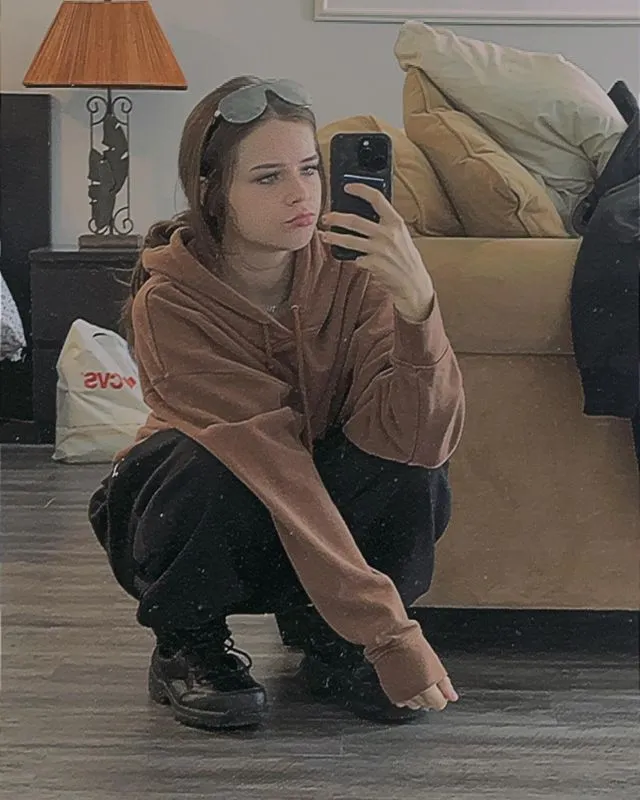Trending Now: Talissa Smalley & OnlyFans Leaks - See Why!
Is the digital landscape truly democratizing content creation, or is it merely offering new avenues for exploitation? The rise of platforms like OnlyFans, and the subsequent attention on figures such as Talissa Smalley, presents a complex picture of empowerment, vulnerability, and the ever-blurring lines of privacy in the age of social media.
OnlyFans, a platform initially designed to facilitate a direct connection between content creators and their fans, has evolved into a significant player in the creator economy. The sites inclusive nature, welcoming artists and content creators from various genres, is undeniable. It offers a space for monetization, allowing individuals to generate income directly from their work, while simultaneously fostering direct engagement with their audience. This model bypasses traditional gatekeepers, granting creators unprecedented control over their content and their relationship with their fanbase. However, the very nature of this direct engagement raises critical questions about the boundaries of consent, the potential for exploitation, and the long-term psychological impact on those who choose to participate. The platform itself, and the broader ecosystem it inhabits, demands rigorous examination.
Talissa Smalley, a name frequently encountered within this digital ecosystem, embodies both the allure and the complexities. As a prominent American social media influencer, her presence on platforms like TikTok and Instagram, under the handle @talissasmalley_, has cultivated a substantial following. With over 1.6 million followers on TikTok and a significant presence on Instagram, she has become a recognizable figure in the online world. Her content, a blend of engaging charm and bolder, more visceral expressions, has clearly resonated with a substantial audience. The fact that her content is widely available and discussed across different platforms, including forums dedicated to adult content, creates a multifaceted image that is hard to define.
| Category | Details |
|---|---|
| Full Name | Talissa Smalley |
| Known For | Social Media Influencer, Content Creator |
| Social Media Handles | @talissasmalley_ (Instagram, TikTok) |
| Notable Platforms | TikTok, Instagram, Potentially OnlyFans |
| Estimated Follower Count (TikTok) | Over 1.6 Million |
| Estimated Follower Count (Instagram) | Over 220k |
| Associated Content | Engaging content, potentially adult-oriented content |
| Additional notes | Daughter of comedian David C. |
| Potential Health Condition | Waardenburg syndrome |
The discussion surrounding Smalley extends beyond her immediate platforms. It intersects with the world of adult content, with discussions and links to content appearing on sites like Pornhub, and platforms like Thothub, which specializes in leaked content. The prevalence of such content raises crucial questions about consent, privacy, and the ethics of content sharing. The accessibility of what is alleged to be her content on various pornographic sites, including the claim of nude videos on her model page free, further complicates the narrative and highlights the dangers of non-consensual content distribution. Platforms like Erome and others that facilitate the sharing of erotic images and videos become part of this broader ecosystem, with the potential to blur the lines between personal expression and public exploitation.
The existence of communities like r/lainfluencersnark, which dedicate themselves to discussing and critiquing LA-based influencers, and subreddits like r/michellealvarez and r/getting_clean where content attributed to her is shared, underscore the level of online scrutiny these figures face. The intersection of these communities with adult content platforms creates a complex web of interactions, where the boundaries between admiration, criticism, and exploitation can become exceedingly thin. These online spaces, while allowing for freedom of expression and community formation, may also contribute to the amplification of potentially harmful content and the perpetuation of negative stereotypes.
The emergence of OnlyFans as a significant player in the creator economy has sparked considerable debate. While it offers creators a means to monetize their work and connect with fans, it also raises concerns about the potential for exploitation, particularly in the context of adult content. The site's inclusive nature allows creators from various genres to participate, but it also means navigating complex issues surrounding consent, privacy, and the potential psychological impact on those involved. The direct relationship between creators and fans requires careful consideration of boundaries and ethical responsibilities.
Furthermore, the presence of leaked content and non-consensual sharing on various platforms demands attention. Sites that host leaked nudes, accidental slips, and bikini pictures contribute to a potentially harmful environment. The prevalence of such content raises questions about privacy violations, the distribution of explicit materials without consent, and the potential for long-term damage to individuals' reputations and well-being. The constant availability of adult content on various platforms makes it difficult to fully control one's digital footprint.
The phenomenon extends to the sharing of intimate content, including nude videos and revealing photographs, which raises profound ethical and legal implications. These sites are often at the center of discussions concerning consent, privacy, and the potential for exploitation. The blurred lines between artistic expression and exploitative content require careful consideration. The circulation of explicit materials without explicit consent, or through data breaches, causes irreversible damage to individuals' reputations and safety. Moreover, it creates a hostile environment where victims are often unfairly blamed or ostracized. The responsibility for regulating and moderating this content becomes crucial, although complex.
The digital age has made it incredibly easy to access and share content, including adult material. This accessibility has brought with it the rise of porn blogs and download sites. These sites often provide access to a wide range of explicit content, including videos, photos, and other forms of media. While they may offer entertainment, they also raise significant concerns about the ethical and legal implications of such content. Issues like copyright infringement, the exploitation of vulnerable individuals, and the potential for the spread of harmful content are central to this discussion. The role of technology and the internet in shaping our perceptions of sexuality, relationships, and privacy is also profoundly affected.
The presence of content from social media influencers in the adult entertainment landscape raises critical questions. Many influencers, like Talissa Smalley, build a following through their content on various platforms. This content can vary from lighthearted or comedic material to more suggestive or intimate material. When influencers' content crosses over into the adult entertainment sphere, it blurs the lines between personal branding, artistic expression, and potential exploitation. Considerations must be made regarding consent, privacy, and the potential for individuals to be exploited or pressured into creating content they are uncomfortable with.
The blurring of lines between content creation and adult entertainment has further implications. The increasing visibility of adult content can lead to issues regarding consent and privacy, particularly when the content is shared without permission. This trend can create a climate where individuals are pressured into performing or creating content they are uncomfortable with. There is also a need for vigilance regarding the exploitation of minors and vulnerable individuals within this ecosystem. The role of social media platforms and the internet in shaping our perception of sexuality, relationships, and personal boundaries needs constant discussion.
The discussion surrounding Talissa Smalley underscores the complex interplay between social media, influencer culture, and the adult entertainment industry. The convergence of these aspects presents many ethical, social, and legal challenges. The issues involved include consent, privacy, exploitation, and the responsibility of platforms, content creators, and consumers. By examining these facets, we can have a more nuanced understanding of the evolving digital landscape. We are urged to approach these topics with empathy and a commitment to ethical content creation and consumption. Only through constant examination and open discussion can we navigate the complex terrain of online content and strive for a digital environment that respects individual rights and promotes responsible conduct.
The prevalence of platforms like TikTok and Instagram, where influencers curate their image and content, adds another layer to this complexity. The curated nature of these platforms creates a strong incentive for individuals to develop a public persona that is attractive to their audience. However, this can also lead to pressure to create content that is increasingly provocative or explicit, which may cause discomfort or even potential harm. The need for greater transparency and critical thinking, both from the content creators and their audience, is paramount.
The involvement of communities like r/lainfluencersnark highlights the critical role of online discourse and the discussion surrounding influencers. These communities often offer both admiration and criticism, fostering conversations about authenticity, accountability, and the ethics of online content creation. They also serve as a vital platform for those who have concerns about online content or the actions of influencers. This underscores the importance of maintaining a safe space for discussion and addressing issues like cyberbullying, harassment, and the potential for harm online. The role of these communities in scrutinizing the impact of social media on individuals and society is crucial.
The discussion surrounding Talissa Smalley also brings attention to sensitive issues. Some people have speculated that Smalley might have Waardenburg syndrome, a genetic condition characterized by hearing loss and changes in skin pigmentation. In this light, the question of whether allowing a person with a genetic condition to participate in potentially exploitative content raises questions about the ethical limits of the content economy and the potential for commodification of individual differences. This discussion emphasizes the importance of ethical content creation and consumption, especially when dealing with sensitive and vulnerable subjects.


